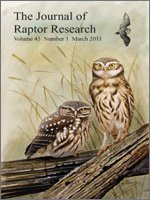BioOne.org will be down briefly for maintenance on 17 December 2024 between 18:00-22:00 Pacific Time US. We apologize for any inconvenience.

Habitat Use by a Reintroduced Population of Bearded Vultures (Gypaetus barbatus) in the Italian Alps
No abstract available
No abstract available
No abstract available
No abstract available
No abstract available
No abstract available
No abstract available
No abstract available
No abstract available
